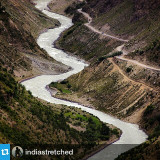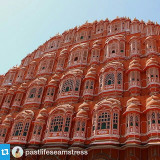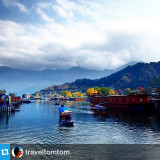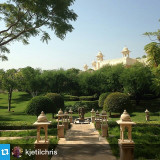Random image from our India photo collection
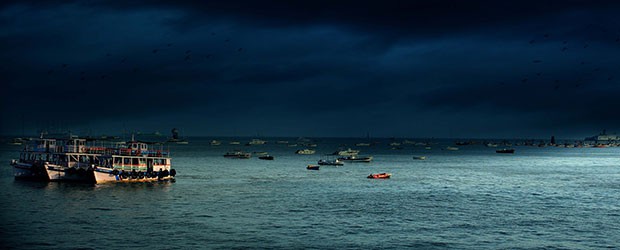
Tamil Nadu Tourist Centers
Kodaikanal
The Kodai Club gives the impression of stepping back into colonial India. The lounge with its period fireplace, the piano, the Leigh Hunt prints, the library stocked with books by Evelyn Waugh, Anthony Trollope, and the bar with stuffed heads of bison, tigers, deer-horns, and a picture of the Laughing Cavalier by Franz Hals, the restaurant with old English plates, a glowing hearth-fire, and landscape prints, are all British legacies.
Cinnereras and primulus add to the English atmosphere, and again one is struck by the predominance of the lilac-purple theme. The dinner consisting of steaming mulligatawny soup, roast chicken and potatoes, and apple pie, is a further British legacy.
As one relaxes in the comfortable chamber of the Kodaikanal Club, a cheerful log fire dances a tableau of flame and shadow on the hearth, keeping out the chill of the night.
One wakes up with an air of expectancy refreshed after a good night’s sleep. The tree-fringed lake greets one in the crisp early morning. One realizes that the lake is the cool heart of Kodaikanal.
It is the legacy of the then Collector, Sir Vere Livinge, who formed it by blocking the valley where three streams flowed. It spreads over an area of 60 acres and is skirted by a three-mile tarred road. There is a Boat Club and a public ferry.
Just across the Kodaikanal Club is the Kodaikanal School - an imposing campus of verdant manicured lawns, dignified trees and solid stone buildings. This co-educational, English medium boarding school offering a pre-university curriculum in 12 grades, prepares students for entrance to Indian and worldwide colleges and universities through the Kodaikanal School Diploma.
Selected students are prepared to write the external exams of the International Baccalaureate, based in Geneva. More than 30 nationalities are represented in the school community of students and staff.
On the wall of the principal’s outer office is a plaque inscribed with an appropriate quotation from the French philosopher Teihard de Chardin: “Joy is the infallible sign of the presence of god.”
Almost cheek by cheek with the Kodaikanal School is the Lutheran Church - a Gothic stone building with stained glass windows and modern paintings and batiks portraying scenes from the life of Christ.
Nearby is an even more famous church - Christ the King Church, which also is, a very Gothic and solemn granite structure with stained glass windows.
The names of the buildings in Kodaikanal are very evocative: ‘Loch End’ and ‘Mansarovar’ - these two houses by the lakeside, bridge the time span from colonial times to the present.
Hillbrook, Furzbank, Wood-cote, Whispering Pines, and Rock Cottage - all conjure up the beauty and spirit of their natural ambience.
Jacaranda trees burst out in purple profusion, as though singing hosannas to the skies. Magnolia trees guard their ‘escaping’ fragrance, while cherry trees sweep in graceful pink arcs.
On the east side of the lake is Bryant’s Park, named after the forest officer who planned its layout around the turn of the century. Beautiful pine and eucalyptus trees grow here.
There is one ancient eucalyptus tree dating back to 1846, which is, 250 feet high and 10 feet wide. The well-laid out gardens contain many annuals and perennials like azaleas, watsonias, dahlias, stock, primulas, fusschias, asters, etc.
Many exotic varieties of orchids are housed in the Orchid House. One can also take a walk along the lotus pond.
About a kilometer from the lake is Coaker’s Walk, named after St. Coaker of the Royal Engineers, offering a fantastic view of the plains and the, distant hills. There is a rugged pristine beauty about these vistas, and the mist rising in veils from the valley below, gives the place an unreal quality.
Driving along the cool green darkness with the trees making a canopy overhead, one reaches Green Valley View. Twisted cypress roots make a natural crazy path to the sheer drop of 1,000 feet that overlooks the Vaigai Dam.
Clouds are banked like snow, and violet haze envelopes the distant hills. Here too, the mist rises from the valley, imparting a solemn and out-of-this-world beauty to the scene. The exclusive Kodai Golf Club is very near to Green Valley View.
Past the Golf Club is the 114-acre Golf Links, another colonial legacy - an undulating green velvet carpet. Thick woods line the road leading to the Pillar Rocks. These are three vertical pillars standing shoulder to shoulder measuring 112 m. The ground drops sheer below them, creating a dramatic impact and affording a stupendous view of the valley below.
Soon mist wrap up the pillars in mystery and one wonders whether they are real, or whether they were a figment of one’s imagination. Then the sun melts the mist away and the rocks rise, solemn and majestic, dappled in sun and shadow: the effect is ethereal and awe-inspiring.
The abundance of pear orchards is a striking feature of the Kodaikanal landscape. Here and there, a solitary snowy blossom seems to peep out tentatively to inspect the weather conditions, and one has a hint of the profusion of pear blossoms to follow, when the branches would be heavy with their own blooms, leaving little room for the leaves.
A sheer lacy curtain of water, so aptly named ‘Fairy Falls,’ is nearby. About five and a half km from the lake is the Shenbaganur Museum, maintained by the Sacred Heart College, a Theological Seminary founded in 1895.
The stuffed-birds and the butterfly collection are remarkable. The archeological collection is meticulously documented. One can see the implements and the burial urns of the Paliyans here. One of the best orchidariums in the country, with more than 300 species of orchids, is also located on the premises of Sacred Heart College.
Go back
Cinnereras and primulus add to the English atmosphere, and again one is struck by the predominance of the lilac-purple theme. The dinner consisting of steaming mulligatawny soup, roast chicken and potatoes, and apple pie, is a further British legacy.
As one relaxes in the comfortable chamber of the Kodaikanal Club, a cheerful log fire dances a tableau of flame and shadow on the hearth, keeping out the chill of the night.
One wakes up with an air of expectancy refreshed after a good night’s sleep. The tree-fringed lake greets one in the crisp early morning. One realizes that the lake is the cool heart of Kodaikanal.
It is the legacy of the then Collector, Sir Vere Livinge, who formed it by blocking the valley where three streams flowed. It spreads over an area of 60 acres and is skirted by a three-mile tarred road. There is a Boat Club and a public ferry.
Just across the Kodaikanal Club is the Kodaikanal School - an imposing campus of verdant manicured lawns, dignified trees and solid stone buildings. This co-educational, English medium boarding school offering a pre-university curriculum in 12 grades, prepares students for entrance to Indian and worldwide colleges and universities through the Kodaikanal School Diploma.
Selected students are prepared to write the external exams of the International Baccalaureate, based in Geneva. More than 30 nationalities are represented in the school community of students and staff.
On the wall of the principal’s outer office is a plaque inscribed with an appropriate quotation from the French philosopher Teihard de Chardin: “Joy is the infallible sign of the presence of god.”
Almost cheek by cheek with the Kodaikanal School is the Lutheran Church - a Gothic stone building with stained glass windows and modern paintings and batiks portraying scenes from the life of Christ.
Nearby is an even more famous church - Christ the King Church, which also is, a very Gothic and solemn granite structure with stained glass windows.
The names of the buildings in Kodaikanal are very evocative: ‘Loch End’ and ‘Mansarovar’ - these two houses by the lakeside, bridge the time span from colonial times to the present.
Hillbrook, Furzbank, Wood-cote, Whispering Pines, and Rock Cottage - all conjure up the beauty and spirit of their natural ambience.
Jacaranda trees burst out in purple profusion, as though singing hosannas to the skies. Magnolia trees guard their ‘escaping’ fragrance, while cherry trees sweep in graceful pink arcs.
On the east side of the lake is Bryant’s Park, named after the forest officer who planned its layout around the turn of the century. Beautiful pine and eucalyptus trees grow here.
There is one ancient eucalyptus tree dating back to 1846, which is, 250 feet high and 10 feet wide. The well-laid out gardens contain many annuals and perennials like azaleas, watsonias, dahlias, stock, primulas, fusschias, asters, etc.
Many exotic varieties of orchids are housed in the Orchid House. One can also take a walk along the lotus pond.
About a kilometer from the lake is Coaker’s Walk, named after St. Coaker of the Royal Engineers, offering a fantastic view of the plains and the, distant hills. There is a rugged pristine beauty about these vistas, and the mist rising in veils from the valley below, gives the place an unreal quality.
Driving along the cool green darkness with the trees making a canopy overhead, one reaches Green Valley View. Twisted cypress roots make a natural crazy path to the sheer drop of 1,000 feet that overlooks the Vaigai Dam.
Clouds are banked like snow, and violet haze envelopes the distant hills. Here too, the mist rises from the valley, imparting a solemn and out-of-this-world beauty to the scene. The exclusive Kodai Golf Club is very near to Green Valley View.
Past the Golf Club is the 114-acre Golf Links, another colonial legacy - an undulating green velvet carpet. Thick woods line the road leading to the Pillar Rocks. These are three vertical pillars standing shoulder to shoulder measuring 112 m. The ground drops sheer below them, creating a dramatic impact and affording a stupendous view of the valley below.
Soon mist wrap up the pillars in mystery and one wonders whether they are real, or whether they were a figment of one’s imagination. Then the sun melts the mist away and the rocks rise, solemn and majestic, dappled in sun and shadow: the effect is ethereal and awe-inspiring.
The abundance of pear orchards is a striking feature of the Kodaikanal landscape. Here and there, a solitary snowy blossom seems to peep out tentatively to inspect the weather conditions, and one has a hint of the profusion of pear blossoms to follow, when the branches would be heavy with their own blooms, leaving little room for the leaves.
A sheer lacy curtain of water, so aptly named ‘Fairy Falls,’ is nearby. About five and a half km from the lake is the Shenbaganur Museum, maintained by the Sacred Heart College, a Theological Seminary founded in 1895.
The stuffed-birds and the butterfly collection are remarkable. The archeological collection is meticulously documented. One can see the implements and the burial urns of the Paliyans here. One of the best orchidariums in the country, with more than 300 species of orchids, is also located on the premises of Sacred Heart College.
Go back


